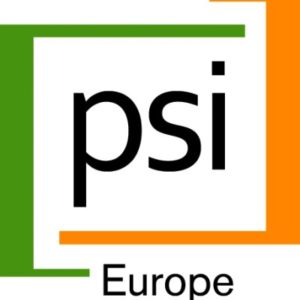YOUNG WOMEN DESERVE CHOICES FOR THEIR MENSTRUAL HYGIENE
While the topic of menstruation is gaining traction and attention across the globe, data on menstrual hygiene management (MHM) practices and consumers’ preferences are scarce: PSI aimed to bring its unique knowledge and experience of health markets to help improve MHM markets for adolescent girls and young women (AGYW).
With funding from the Bill and Melinda Gates Foundation, PSI conducted research in 2017-2018 to understand consumer preferences and market failures for MHM products, from the perspective of AGYW, in Ethiopia & India. Research included 1) Market data and literature review, 2) human centered design (HCD) and qualitative research, and 3) a quantitative discrete choice experiment (DCE) and survey.
The first findings show that:
1. Given the choice, girls (both in India and Ethiopia) would choose commercial disposable pads.
There is a strong demand among AGYW for effective menstrual products that protect from stains and preserve mobility. In India, the Discrete Choice Experiment (DCE) results revealed a strong preference for a product that protects on the heaviest days, that has wings, that stays in place during moderate to heavy activity and can be purchased in a chemist or beauty parlour. AGYW in Ethiopia also had strong preferences for products that stayed in place and protected against leaks on heavier flow days, and a strong negative preference for reusable cloth products. “When I compare sanitary pads with cloth it’s incomparable. I continue using improvised products because I have no [other] option”, testified one of the Ethiopian girls.
2. When they can’t afford commercial pads, AGYW opt for mixed use, saving the commercials pads for leaving the house.
The data reveal that mixed use is a widespread practice, but rather than being linked to preference, it is connected to issues of affordability and the lack of access to and control of funds: “[I] use cloth because I can’t afford to buy pad always”, said another Ethiopian girl. However, while price is still one of the main barriers to access, the data showed that AGYW are willing to pay a premium for certain quality features like stickiness, length of the pad and wings, confirm the users’ desire to stay mobile and free from stains.
3. Commercial pad use increases with income increase / control of household income.
The research consistently shows that while young girls gravitate towards home-made solutions, as they age they tend to opt for commercial options at least when leaving the house. When AGYW manage to put aside savings or start earning a salary, commercial pad use increases. Furthermore, wealthier households have much higher rates of exclusive pad use.
This first round of data analysis shows that subsidized or free products don’t always match user preference: when girls receive free menstrual products, their needs are not necessarily addressed because, if the quality is low, they are likely to give them away to mothers or friends or even sell them to buy commercial pads: “… Will sell school pads I receive for 15 Br, add 2 Br from my savings and will buy [the commercial pads] for myself” (Ethiopia).
These insights suggest that non-governmental organizations, public health actors and the donor community need to take consumer preferences into greater account and work with private sector actors to deliver affordable, quality products in a sustainable way. The data from these two MHM markets remind the community of practice they are not working only with beneficiaries, but first and foremost with users and consumers whose preferences deserve to be given space and value.
